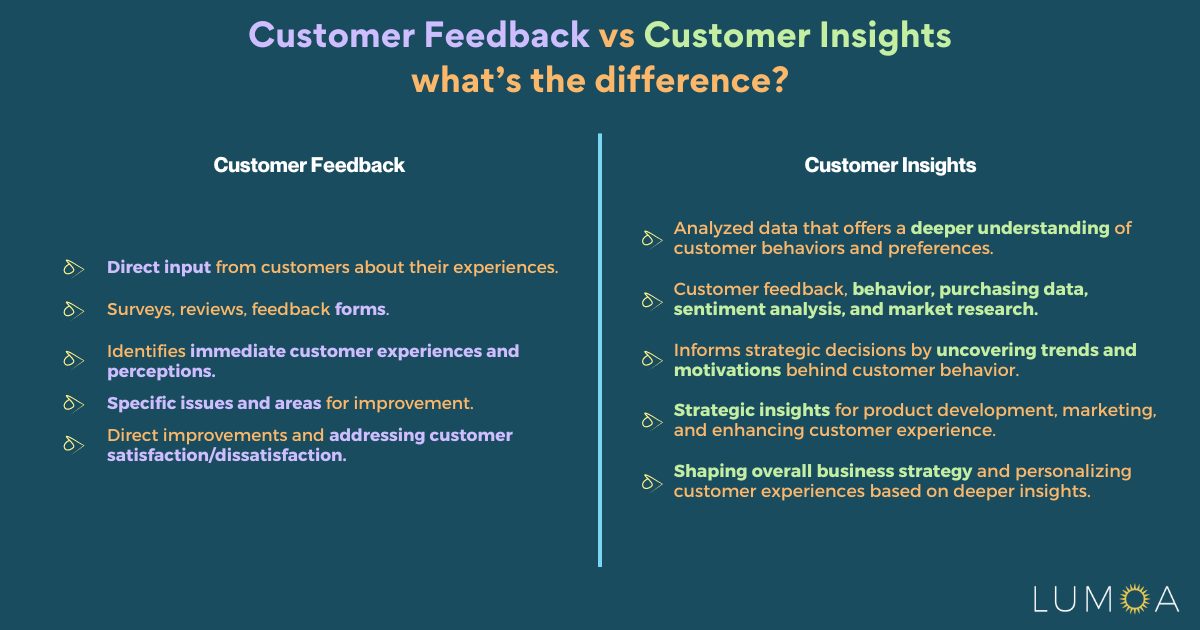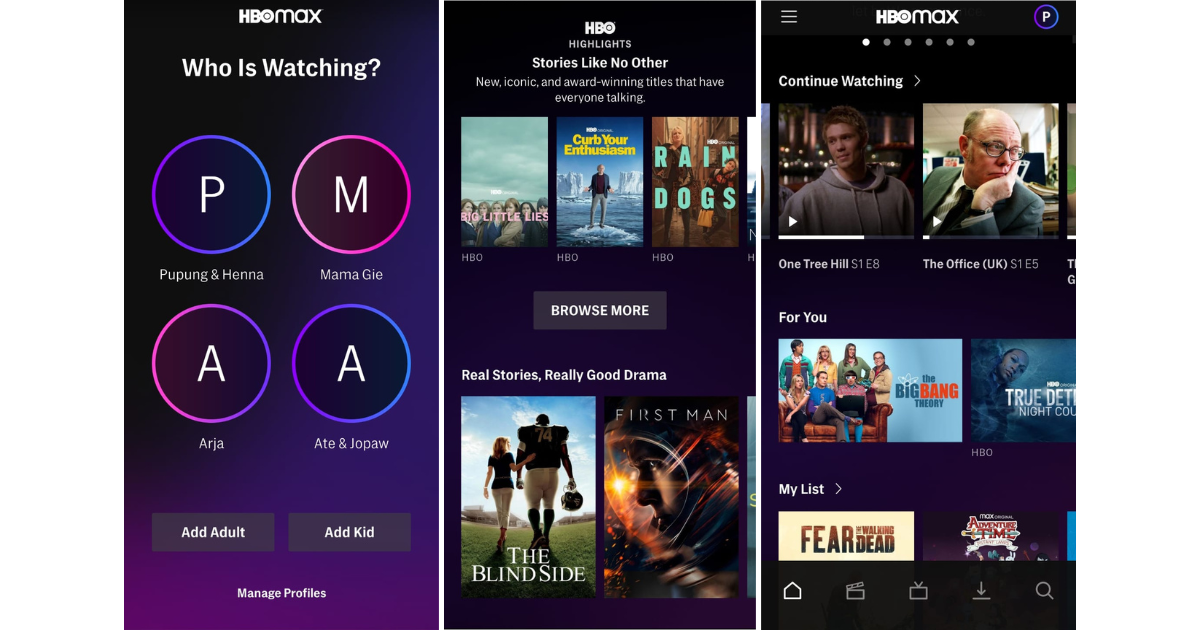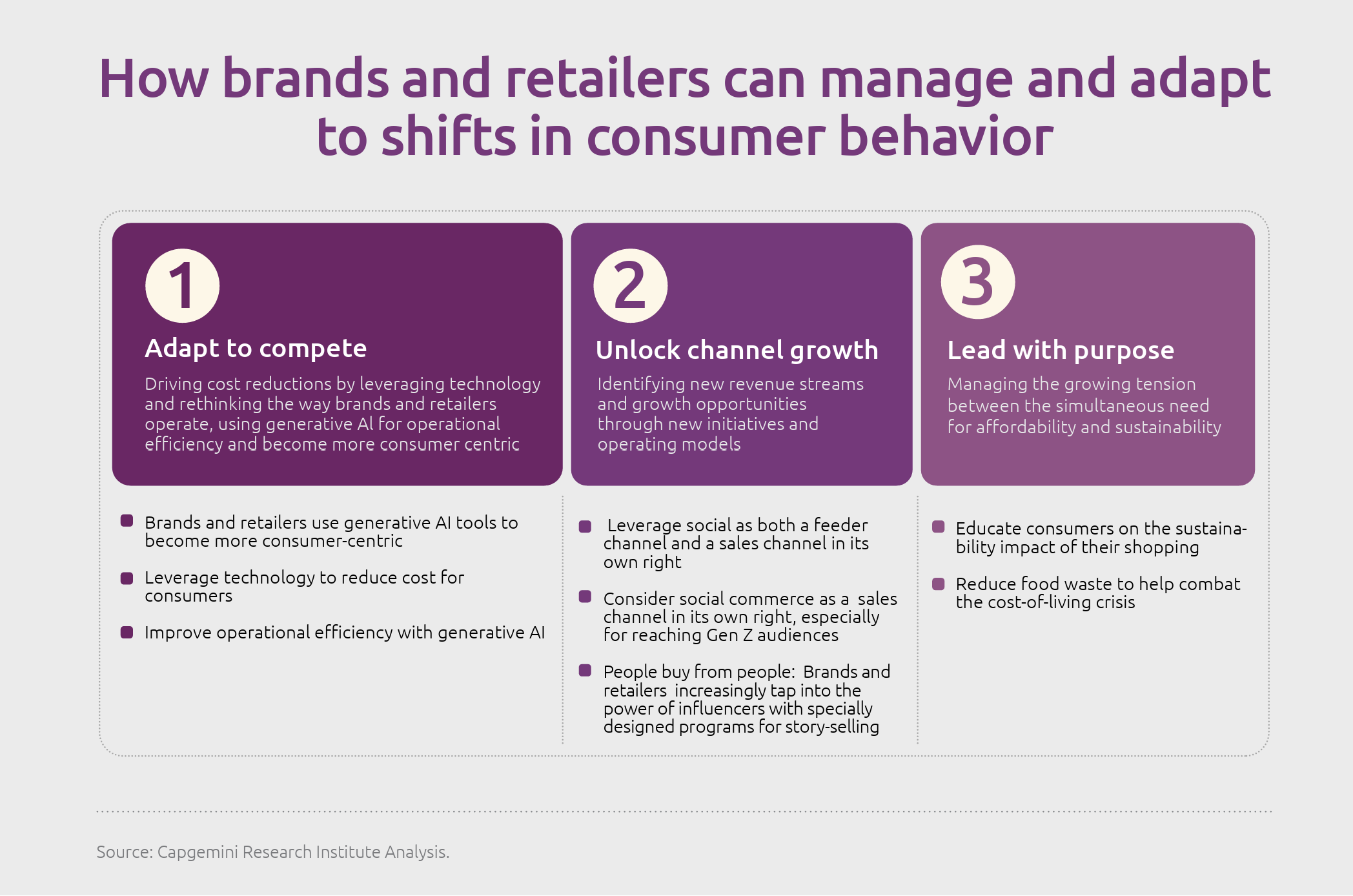Creating a Powerful Customer Insight Strategy

Last updated on September 23, 2024
As a business, you may have repeatedly wondered – How can we give our users what they need? How can we improve our products and services? How can we increase profitability?
Well, there is a common answer to all these questions- customer insights!
If you have used customer insights data to know what your customers want then you also understand that it holds the key to growth, right?
But here is the catch- knowing is not enough! The real key lies in the art of leveraging customer data. Effectively using customer insights to grow your business may be not as easy as it sounds but it is not rocket science either.

You just need a good strategy to do so. A powerful customer insight strategy or framework helps you map your customer journey, enhance products or services, and provide a better customer experience.
Improved customer experience, in turn, strengthens customer loyalty, creates a broader user base, and increases profitability for any business.
In this article, we will discuss why using a customer insight strategy is valuable and how to create an effective one for your business growth.
And if you haven’t taken the time to learn what your customers want, then this is high time that you did that.
If you are new to the world of customer insights and the art of leveraging it, let’s start from scratch.
In This Article:
What are customer insights?
Customer insights are not just customer feedback. Customer feedback is direct responses received from customers and are often obtained through surveys or reviews.
Even though customer feedback data provides detailed and specific information regarding their satisfaction level or complaints, they do not offer a deeper understanding of factors like customer behavior, market trends, personalization needs, etc.
On the other hand, customer insight goes beyond individual feedback!

Technically speaking, customer insights refer to a deeper understanding, analysis, and interpretation of customer data points. Those data points typically include information like buying behavior, needs, wishes, preferences, and motivations.
Customer insights are crucial for building lasting brand-customer relationships and staying competitive.
And from where these customer insights are derived? They come from various data points such as customer feedback, purchasing patterns, social media interactions, website usage, and other communications with the business.
Let’s explore more with some examples-
Understanding Customer Behavior: Wants, needs, and wishes
Here’s a recent trend to give you an insight into what’s going on in various industries. Capgemini conducted research and found that brands and retailers are leveraging technology and generative AI to become more consumer-centric, reduce costs, and improve operational efficiency to adapt to shifts in consumer behavior. Understanding customer behavior is central to these efforts. In addition to exploring new revenue streams through social commerce and influencer partnerships, particularly targeting Gen Z, they are also striving to balance affordability with sustainability efforts, such as reducing food waste and educating consumers about sustainable shopping.
Brands that actively listen to customer feedback and enhance their product create stronger customer relationships.
Imagine a big clothing brand like Levi’s. It listens to its customer feedback and discovers that more people are interested in eco-friendly clothes.
So, the brand now relies on Water Less Technology to reduce water usage in their jeans production, offering customers an option to choose what they care about.

Personalizing services and marketing communication
Think about a popular streaming service like HBO Max. It feels like they know your taste so well. It is because they pay attention to what you watch and what you like.
Then, they send you suggestions based on your interests. It is like they know you so well!
HBO uses customer insight analytics and machine learning to process its customer data. Afterward, the insights are unified by their data science teams to sync with HBO Max’s different teams and their goals. The end goal of all this is to offer personalized viewing suggestions to the customers.

HBO Max’s recommendation service also uses voice-enabled language processing through Amazon Alexa and Google Assistant. If a user says ‘Alexa, play something romantic’. The users are probably going to get romantic movie recommendations when they open HBO Max.
Customer Personalization, as exemplified by streaming services like HBO Max, contributes to higher customer retention and satisfaction. A study by Segment states that 44% of consumers are likely to become repeat buyers when offered a personalized shopping experience.
Allocating resources wisely
Suppose a SaaS-based company notices its customers are increasingly asking questions about a specific feature. So, they decided to make that feature better.
It means happy customers who got what they asked for.
Companies that invest resources in enhancing specific features based on customer needs align with changing expectations.
A report by Salesforce says that 68% of customers say the pandemic has raised their expectations of companies’ digital capabilities.

Assessing Marketing ROIs
Businesses that recognize the impact of social media ads can allocate budgets more effectively. According to a report by Hootsuite, 73% of marketers believe social media marketing has been effective for their business.
A baker in your hometown notices that ads on social media bring more customers, as opposed to regular banner ads. So, she decides to spend more on social media ads.
It is a win-win situation for both. You discovered yummy cakes because you found that ad on social media.
Keeping up with changing market trends
It is amazing to note that the global mobile banking market is estimated to reach $1.36 billion by 2028. Based on such estimations, banks that had embraced digital transformation to offer their services made more evident progress than their peers.
This highlights the importance of strategically following future trends based on customer insights.
For instance, Singapore’s leading financial establishment DBS Bank has been recognized as one of the forerunners of digital innovation in banking and financial services. Their investment in technologies such as artificial intelligence and data analytics delivered an economic value of SGD 180 million, comprising a revenue uplift of SGD150 million and SGD30 million from cost avoidance and productivity gains.
All of these examples suggest one thing- customer insights carry information that can transform the way we do business.
But simply analyzing the insights will not work. You will need a strategy to leverage those insights so that teams can chase common KPIs and businesses can make informed and strategic decisions.
So, why is having a customer insight strategy a big deal? In the next part of this article, we will discuss that.
What is a customer insight strategy?
Think of it like a mind game and only with accurate answers! So, it’s all about finding what customers want and how to use customer feedback to make your business thrive.
Once you have figured out how to gather, understand, and put all the customer feedback data to good use, you can make business decisions that keep you ahead of the crowd.
Going by the definition, a customer insight strategy means a comprehensive plan for systematically leveraging customer insights to drive profitability.
And how does it help?
A good customer insights strategy creates magic and transforms your products or services into popular ones. In addition to increasing your revenues, this also adds an extra glitz to your overall customer experience.
From a webinar – Customer Support: Using Insights to Hear Your Customers Engage Your Employees, and Improve Your Profits, Taru Aalto had a one-on-one conversation with Richard Jeffreys concerning the changes in the landscape of customer expectations.
“Are you caring about me and my family? Are you keeping your employees safe?… There’s a real shift to people looking at companies that meet their own values and doing business with those.” – Richard Jeffreys
When you offer unmatched customer experience, it broadens your customer base, enhances customer loyalty, and eventually your overall business grows.
A customer insight strategy typically explores ways a business plans to collect, analyze, and leverage customer data to make informed and strategic business decisions.
However, comprehending what customers are saying has gotten tricky. With the overflow of feedback and online chatter, companies are hustling to create personalized experiences. A well-planned customer insight strategy is the solution for this issue.
The business value of having a smart customer insight strategy
We are listing down a few pointers below to elaborate on the business value of having a workable customer insight strategy-
- Data overflow: Businesses strategically leveraging customer insights are better equipped to handle the data overflow in the digital age and make smarter decisions.
- Personalization: Businesses that employ customer insights to tailor products and services tend to see increased customer satisfaction and engagement.
- Real-time insights: Businesses using customer insights in real-time can respond promptly to feedback and capitalize on immediate opportunities, contributing to enhanced customer satisfaction.
- Multi-channel juggling: A customer insight strategy helps businesses create a seamless customer journey across various digital channels, improving overall user experience.
- E-commerce Magic: Businesses, especially e-commerce sites, using a customer insight strategy often witness improved online sales, optimized digital storefronts, and enhanced user experiences.
- Predicting Trends: Businesses that stay ahead of trends through customer insights tend to be more innovative, meeting customer expectations even before a trend hits the market.
- Customer Journey Mapping: Fancy, Right? Companies using customer insights for journey mapping can enhance, identify, and address pain points, resulting in a more satisfying user experience.
- Staying quick and ahead: Businesses utilizing customer insights can adapt more quickly to changing market conditions, fostering an agile and responsive approach to challenges.
- The ‘cool’ factor: While measuring the “coolness” index is a tricky business, companies with a top-notch customer insight strategy often gain a competitive edge because they understand and meet customer preferences better than their competitors.
- Loyalty rate: A robust customer insight strategy helps businesses identify and implement strategies to retain their customer base, building long-lasting and loyal relationships.
Now that you understand the impact of having a customer insight strategy, the next step is to see how to achieve that for your company.
Every company has a different customer base. The ways you measure data may be different from your peers. But it is okay! It just means that your strategy will be different as well.
Creating a customer insight strategy should be aspirational but grounded in your resources and capabilities.
First, You need a clear picture of what you are trying to fix and understand how that will impact the future. To do that, you will need your customer metrics at your fingertips, see what else is required, and decide who will be responsible for it.
Let’s find out more.
Develop Your Customer Insight Strategy
Let’s quickly go over how you can create a workable customer insight strategy in 10 steps to make it more comprehensive.
Here we go-

Step 1: Define objectives and goals
- Identify business objectives: Outline your business goals and what you aim to achieve through customer insights as clearly as possible.
You may include objectives like improving customer satisfaction, increasing retention or launching successful email marketing campaigns. - Establish Key Performance Indicators (KPIs): Define your KPIs, see if they are measurable, and align them with your objectives.
These might include customer satisfaction scores, retention rates, conversion rates, and others important to your business.
Step 2: Develop a data collection strategy (Source and method)
- Identify data sources: Determine and list the sources of your customer data, including CRM systems, social media, website analytics, surveys, and customer feedback.
- Choose data collection methods: Select and Implement various methods to collect data, such as surveys, interviews, focus groups, and social media monitoring.
Step 3: Segment your audience and create customer personas
- Segment your audience: Analyze collected data to identify customer segments based on demographics, behavior, preferences, and other relevant factors.
- Build personas: Develop detailed personas for each segment, including their needs, challenges, preferences, and communication channels.
Step 4: Analyze and interpret data insights
- Use analytical tools: Use data analytics tools to interpret and analyze customer data. Identify patterns, trends, and correlations to gain valuable insights.
- Map customer journey: Understand the end-to-end customer journey, from awareness to conversion. Identify touchpoints and pain points.
Step 5: Implement personalization
- Tailor products and services: Use insights to customize offerings based on customer preferences, behavior, and feedback.
- Implement personalized marketing: Develop targeted marketing campaigns and communications that resonate with your desired customer segments.
Step 6: Enhance customer experience
- Address pain points: Identify and address areas where customers may face challenges or dissatisfaction. For example, improving processes or communication can be one way to enhance the experience.
- Optimize customer service: Use insights to enhance customer support by understanding common queries, concerns, and preferred channels.
Step 7: Implement real-time feedback mechanisms
- Use feedback systems: Use real-time surveys and feedback mechanisms to capture immediate customer sentiments and experiences.
- Act immediately: Develop a system for addressing urgent feedback promptly. It demonstrates responsiveness to customer needs.
Step 8: Foster a customer-centric culture
- Promote customer-oriented values: Encourage team members to prioritize and value customer insights. Ensure that a customer-centric mindset is a part of the company culture.
- Train your team: Offer training to employees on the importance of customer insights and how to leverage them in their respective roles.
Step 9: Measure and iterate
- Regularly measure performance: Continuously monitor KPIs and assess the impact of your customer insight strategy on business objectives.
- Iterate and improve: Based on performance metrics and evolving customer needs, refine and adjust your strategy to stay ahead.
Step 10: Stay informed about trends
- Research and stay updated: Regularly research and keep your teams informed about evolving industry trends, technologies, and customer behaviors.
- Embrace emerging technologies: Explore and adopt new technologies, such as Artificial Intelligence (AI) in customer feedback analysis , to enhance the effectiveness of your customer insight strategy.
By following these steps, you can develop and implement a powerful customer insight strategy that meets your business objectives and positions your company as customer-centric and adaptable in a dynamic market.
Conclusion
Trying to leverage every detail of customer insight might be a challenge, but with good strategy, it becomes a practice that contributes to organizational success as well as creating better customer experience programs.
When used effectively, a customer insight strategy can improve brand loyalty, expand user base, and increase profitability.
But before acting on it on an impulse, first, analyze what your company wants to achieve and set up your strategy accordingly. Assess how feasible are your goals with your current company structure, scope, and budget. Then, assess your customer needs and desires to determine the level of your current product experience.
Once you have a hang of it, you can start to branch out into innovative and exciting new customer insight strategies to inform product, marketing, support, and everything in between.

